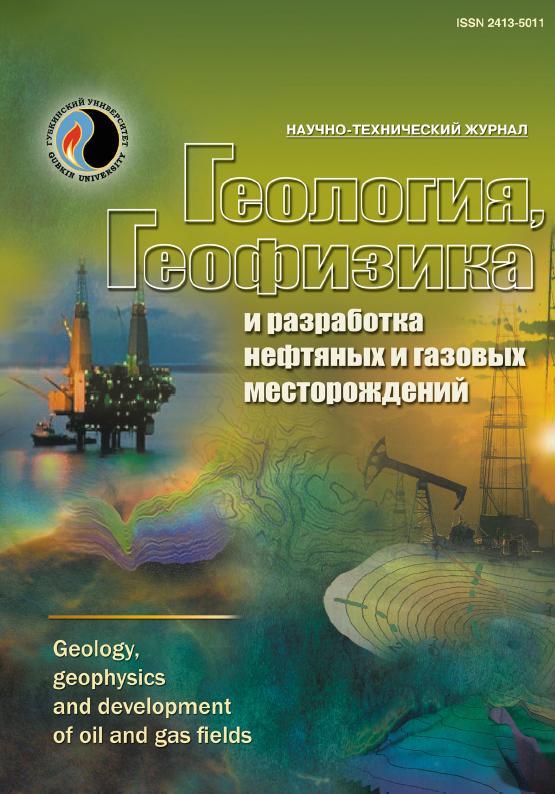Modeling of Jurassic sediment reservoirs based on seismic facies analysis
UDC: 550.8.072
DOI: -
Authors:
CHUCHALINA KRISTINA YU. 1
1,
IVANOV ALEXEY I. 1
1,
KAZANTSEV GLEB V. 1
1
1 NOVATEK STC LLC, Tyumen, Russia
Keywords: coastal-continental sediments, facies, core, pseudo-sandiness, boundary values, seismic facies analysis
Annotation:
The study and involvement into development of hard-to-recover reserves is one of the main tasks in the oil and gas complex. The development of such reserves should be carried out on detailed geological models that take into account the entire volume of geological-geophysical information – core material, the results of interpretation of geophysical and hydrodynamic studies (RIGIS) of wells, 2D and 3D seismic data, etc. The aggregation of all the initial data will allow describing local heterogeneities and changes of filtration-capacitance properties along the section and lateral, which affect the assessment of the reliability of the propagated properties forecast. Thus, it is necessary to develop an approach to the integration of all source data in order to increase detailing of layers models of complex geological structure.
In the course of collection and analysis of the initial data, the authors of the article revealed that the informative value of micro-images in terms of facial interpretation is not inferior in informativeness to core data.
The analysis was based on the data from four wells, in two of which core material was selected, in one well the micro-imager interpretation was carried out. It was revealed that deposits of different genesis were uncovered at the same stratigraphic level of the formation. Restoration of sedimentation conditions and directions of material demolition sources, using an integrated approach, allowed forming a conceptual idea of the geological structure of a promising object.
As a result, the authors of the article managed to develop an approach to the integrated interpretation of geophysical well surveys (GIS), in particular, micro-imager data, core material and seismic information. The application of the methodological solution made it possible to characterize the lithological and facies variability in the interval of the studied formation to a greater extent.
Bibliography:
1. Koskov V.N., Koskov B.V. Geofizicheskie issledovaniya skvazhin i interpretatsiya dannykh GIS: ucheb. posobie. – Perm’: Izd-vo Permskogo gos. tekhn. un-ta, 2007. – 317 s.
2. Obstanovki osadkonakopleniya i fatsii: v 2 t. T. 1: Per. s angl. / Pod red. H.G. Reading. – M.: Mir, 1990. – 352 s.
3. Chernova O.S. Litologo-fatsial’nyy i formatsionnyy analiz neftegazonosnykh tolshch: ucheb. posobie po korotkomu kursu. – Tomsk: Izd-vo TsPPS ND, 2008. – 250 s.
4. Dubrule O. Geostatistika v neftyanoy geologii. – M.–Izhevsk: Institut komp’yuternykh issledovaniy, NITs "Regulyarnaya i khaoticheskaya dinamika", 2009. – 256 s.
5. Ampilov Yu.P. Ot seysmicheskoy interpretatsii k modelirovaniyu i otsenke mestorozhdeniy nefti i gaza. – M.: Spektr, 2008. – 384 s.
6. Skrynnikova A.V., Shubin A.V., Fomin A.E. Izuchenie fatsial’nykh kompleksov sredney yury Zapadnoy Sibiri po 3D seysmicheskim dannym // Trudy RGU nefti i gaza imeni I.M. Gubkina. – 2011. – № 3. – S. 18–27.
7. Partyka G., Gridley J., Lopez J.A. Interpretational applications of spectral decomposition in reservoir characterization: The Leading Edge. – 1999. – № 18. – Pp. 353–360. – DOI: 10.1190/1.1438295
8. Ol’neva T.V. Seysmofatsial’nyy analiz. Obrazy geologicheskikh protsessov i yavleniy v seysmicheskom izobrazhenii. – M.–Izhevsk: Institut komp’yuternykh issledovaniy, 2017. – 152 s.

